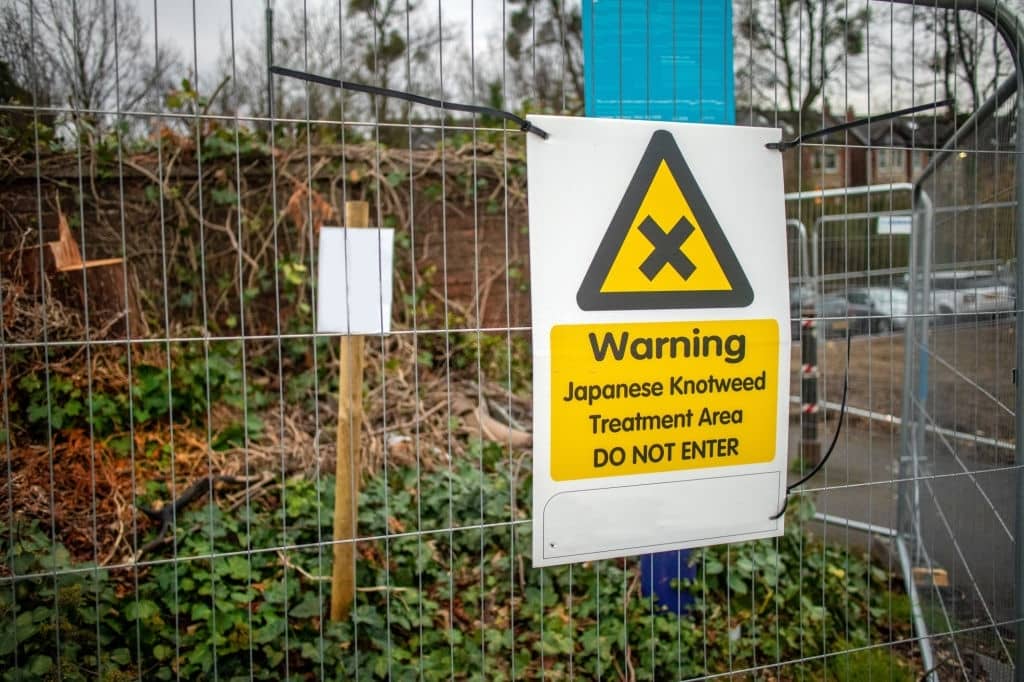
Japanese Knotweed is an invasive plant species that can cause significant damage to properties and landscapes if left untreated. Recognizing the need for effective management is essential for protecting your home or business. This guide explores the top ten powerful treatment methods and highlights how CYB Environmental offers the best solutions for Japanese Knotweed eradication.
What is Japanese Knotweed?
Japanese Knotweed (Fallopia japonica) is a fast-growing plant native to East Asia. Initially introduced for ornamental purposes, it has since become one of the most problematic invasive species in the UK due to its ability to spread rapidly and damage property foundations, drainage systems, and other structures. Its resilience makes professional treatment essential.
Why is Treatment Necessary?
Failing to treat Japanese Knotweed can lead to:
- Structural damage to buildings and infrastructure.
- Legal disputes with neighbours over property encroachment.
- Decreased property value and difficulty in obtaining mortgages.
- Severe ecological impact on native plants and wildlife.
Timely and effective treatment can prevent these issues, ensuring your property remains secure and compliant with legal regulations.
Top 10 Powerful Japanese Knotweed Treatment Methods
- Herbicide Application
Herbicides are among the most common treatments for Japanese Knotweed. Professional-grade herbicides applied over multiple growing seasons can suppress and kill the plant. CYB Environmental uses licensed chemicals to ensure environmental safety and maximum efficacy. - Excavation and Removal
For severe infestations, excavation involves digging out the Knotweed’s rhizome system and safely disposing of the contaminated soil. This method is ideal for construction sites or areas requiring complete eradication. - Root Barriers
Installing root barriers can help contain the spread of Japanese Knotweed. This method is particularly effective near property boundaries or sensitive structures, ensuring the roots cannot invade nearby areas. - Soil Screening
This method involves screening the soil to separate Japanese Knotweed rhizomes, which are then disposed of safely. Soil screening is often used in combination with other treatments for optimal results. - Burning
Controlled burning is a method used to destroy Knotweed’s stems and leaves. While effective for above-ground parts, it is not sufficient for complete eradication unless combined with root-focused treatments. - Stem Injection
In stem injection, herbicides are injected directly into the plant’s stems. This precise method minimizes environmental impact and ensures the chemical reaches the root system effectively. - Biological Control
Introducing natural predators, such as the psyllid insect, is a newer approach to managing Japanese Knotweed. While still being researched, biological control offers an eco-friendly alternative to traditional methods. - On-Site Burial
In on-site burial, Knotweed-infested soil is buried at a controlled depth and sealed with a membrane to prevent regrowth. This method is cost-effective and avoids the need to transport contaminated soil offsite. - Regrowth Monitoring
Successful Knotweed treatment includes post-treatment monitoring to ensure no regrowth occurs. CYB Environmental provides detailed monitoring plans to ensure long-term eradication. - Integrated Treatment Plans- Combining several methods tailored to the infestation’s severity and location ensures the most effective results. A professional assessment is crucial to develop an integrated approach.
Why Choose CYB Environmental for Japanese Knotweed Treatment?
CYB Environmental is a trusted name in Japanese Knotweed treatment, offering:
- Expert Knowledge: With years of experience, their team provides tailored solutions based on the latest research and technology.
- Comprehensive Services: From initial surveys to post-treatment monitoring, they handle every aspect of Knotweed management.
- Eco-Friendly Solutions: CYB Environmental ensures minimal environmental impact by using licensed herbicides and sustainable practices.
- Guaranteed Results: Their proven methods come with guarantees to give you peace of mind.
How to Identify Japanese Knotweed
Early detection is key to effective treatment. Look for the following characteristics:
- Bamboo-like stems with reddish-purple spots.
- Heart-shaped or spade-shaped green leaves arranged alternately.
- Small white flowers blooming in late summer or early autumn.
- Dense clusters of plants growing in disturbed areas or near water sources.
If you suspect Japanese Knotweed on your property, contact CYB Environmental for a professional survey.
Legal Implications of Japanese Knotweed
In the UK, property owners are legally responsible for managing Japanese Knotweed to prevent its spread. Failure to do so can result in:
- Fines and penalties under the Wildlife and Countryside Act 1981.
- Civil lawsuits from affected neighbours.
- Mortgage refusals or devaluation of property.
CYB Environmental can help you stay compliant with legal requirements by providing expert advice and effective treatments.
Steps to Take After Detection
- Contact Professionals: Avoid DIY removal methods, as they often worsen the problem. Reach out to specialists like CYB Environmental for expert advice.
- Survey and Assessment: A professional survey identifies the infestation’s extent and guides the japanese treatment plan.
- Implement Treatment: Choose the most suitable methods based on professional recommendations.
- Monitor Progress: Regular inspections ensure the Knotweed does not return.
Japanese Knotweed poses serious challenges, but with the right approach, it can be effectively managed. From herbicide treatments to excavation and integrated plans, the methods outlined in this guide provide a roadmap for tackling this invasive species.
For professional, reliable, and eco-friendly Japanese Knotweed solutions, contact us today. Their expert team ensures comprehensive treatment and long-term results, protecting your property and peace of mind.

